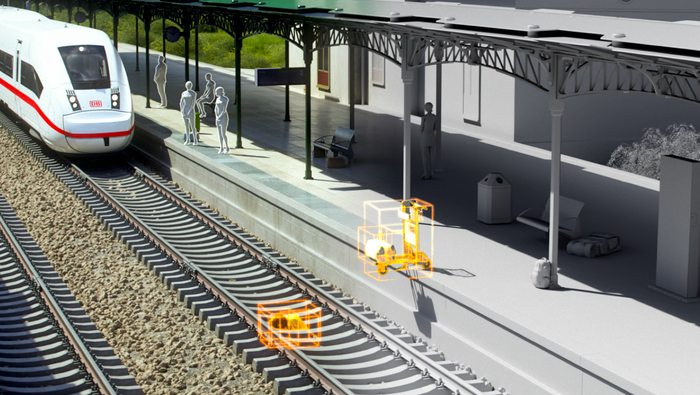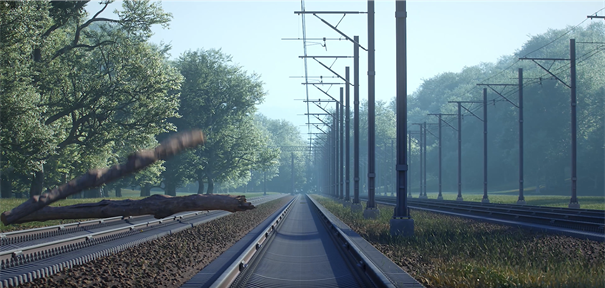Artificial Intelligence in Incident Management
In the Railroad Network’s Digital Twin, AI Is being developed for dealing with rail traffic incidents
To be able to drive in fully automated mode (Grade of Automation 4, GoA4), an environmental perception sensor system coupled with artificial intelligence must be capable of recognizing and interpreting track environments and obstacles. The technical systems must assume control over complex tasks such as route monitoring during train journeys and make smart decisions in the event of irregular occurrences. Due to the high number of possible situations encountered during railway operations, developing, and training the AI required for this represents a major challenge. Such situations range from everyday occurrences to very rare events under a wide variety of conditions, depending on the weather, time of day, and season. Moreover, all locations on the German railroad network must be taken into account. Huge amounts of data are required for training AI in this manner. It is impossible to cover all conceivable events and special railroad operation cases by using real records as a basis. Simulated data contained in a highly realistic Digital Twin of the railroad network must therefore be used.

The Advantages at a Glance
In the Digital Twin, artificial intelligence learns how to deal with dangerous incidents in simulated situations. Independent from the availability of the real railroad tracks and vehicles, the railroad network’s Digital Twin allows AI to learn virtually and purposefully, i.e. significantly faster than if an actual rail vehicle was used. This simultaneously conserves resources that would otherwise be used for costly simulations under real conditions, as the results of virtual situations can be seamlessly adopted into real-world scenarios. Rare or dangerous incidents can be safely simulated and trained in the Digital Twin.
The Technology in Action
In fall 2022, Digitale Schiene Deutschland started using state-of-the-art technology supplied by NVIDIA for developing the Digital Twin and training AI in the railroad sector. This facilitates development of the necessary applications for the digital railroad system using state-of-the-art technology. The Digital Twin is based on a high-resolution digital map which contains precisely measured real track geometries. Throughout the Digital Twin’s design phase, this map is constantly supplemented with 3D models, textures and material properties. This creates a digital, photorealistic image of the actual rail network.
The digital map is permanently stored and made available via the Data Factory. Currently, the simulation is being developed based on the measurement and map data obtained by the Sensors4Rail project. This will make an initial photorealistic Digital Twin of a larger German subnetwork available for training automated driving functions

